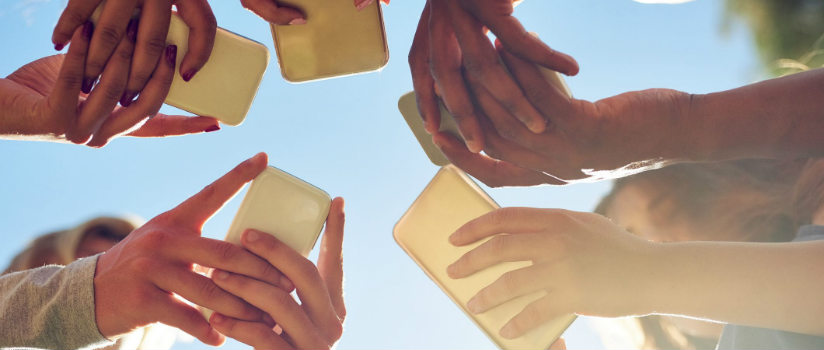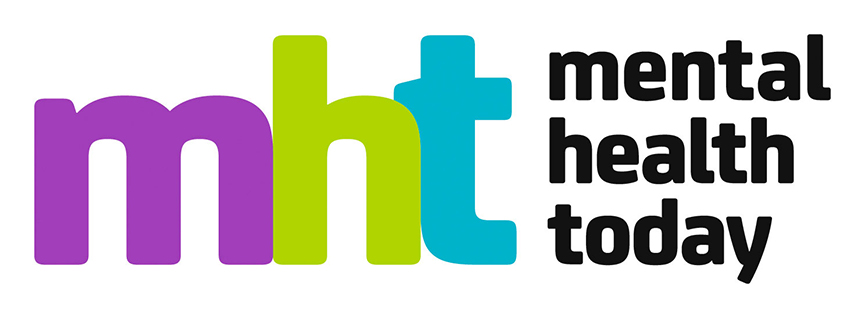Here's why young people are drawn to online counselling
Children and young people are attracted to safe places where they can be themselves.

With the Government’s green paper launched this week, we’re seeing a renewed focus on mental health for young people and an emphasis on an evidence-based approach to support.
This evidence is particularly crucial for online counselling services, which have been available for a long time, but which are still sometimes overlooked in favour of ‘proper’ face-to-face services.
"Most of our young people like the anonymity of Kooth, with almost a third of the 3,000 surveyed citing this as the main reason for choosing online counselling. In fact, the three most commonly chosen reasons were all associated with anonymity and confidentiality."
Evidence shows us that there is a therapeutic alliance in online therapy; we know that therapy is therapy whether it takes place in a room with two people, over the phone or online.
“We also know it appeals to young people. Since we launched Kooth – the UK’s first online counselling service for children and young people – in 2004, we have seen that young people choose online therapy for the freedom and safety it gives them to talk about their problems and worries without having to involve their parents or GP. The service is now available in over 70 clinical commissioning areas, a number we hope to increase.”
While digital services should never replace face-to-face support, we have seen what a huge contribution they make, and how online counselling is helping increasing numbers of young people with serious and long-term mental health issues.
There is mounting evidence to support this view. We sought to quantify this by asking the Education Policy Institute (EPI) to analyse online counselling for children and young people using data from our Kooth service.
The report paints a vivid picture of how Kooth is being used by young people to bring about better mental health.
Freedom in anonymity
Most of our young people like the anonymity of Kooth, with almost a third of the 3,000 surveyed citing this as the main reason for choosing online counselling. In fact, the three most commonly chosen reasons were all associated with anonymity and confidentiality.
This demonstrates the desire of children and young people to have a safe place to be themselves. One finding, which illustrates this well is that between April 2016 – 2017, over 280 registrants identified as agender or gender fluid, which at one per cent of all Kooth users is way above the 0.02 per cent who identify their gender as ‘other’ when getting face-to-face support from Children and Adolescent Mental Health Services (CAMHS). According to EPI, “This could potentially indicate that young people are more willing to be open about their gender fluidity due to the anonymous nature of online [counselling] provision.”
As one of the young people on Kooth put it: “If you have a problem just talk to them it’s all kept secret and it’s easier to type…and they don’t know who you are so they can’t judge you at all.”
Existing academic research corroborates the idea that online counselling promotes free expression, especially of taboo topics, such as suicide. This theory is supported by research by Suler, who described a concept of the ‘online disinhibition effect’ where people are found to be more willing to disclose personal information online.1
Jessica
Jessica had been experiencing emotional abuse and the threat of physical abuse at home. She sent a message on Kooth saying:
“I need to talk to someone. My dad is really aggressive – he is always shouting and threatening to hurt me. He’s been violent to my older sister before a few years ago so I’m worried something’s going to happen to me”.
Kooth encouraged Jessica to access online counselling sessions which she did and also monitored her risk in line with the organisation’s safeguarding procedures.
She was also offered information about local domestic violence support services and crisis services. Jessica was also encouraged to share her details and access face-to-face support. Her initial approach is reflective of the way in which many young people reach out to the service through the messaging function to ‘test’ the service in a safe way. Kooth provided Jessica with the opportunity to talk through her fears and concerns anonymously, safely and on her own terms.
Although the service is anonymous, we do collect data around presenting issues and types of goals set. We also know basic information about each Kooth client, such as general location and age.
Age
Interestingly, data shows that at 11, more boys are using the service than girls. Conversely, at all other times, there are more females using Kooth, which is more typical of similar services or of those using social media sites.
The median age of a Kooth user is 15, which reflects the fact that most mental health problems in young people emerge between the ages of 14 and 17. Nearly one in five of the new registrants in 2016-17 were between 10 and 12, showing early self-engagement.
Black, Asian and minority ethnic backgrounds
The report also highlights something else we’ve known about Kooth: that it attracts those from traditionally hard-to-reach communities. When compared to the general population in the local authority areas where we are commissioned, Kooth attracts a higher proportion of people from different ethnic minority backgrounds (17.6 per cent compared to 10 per cent).
Hours
Although busiest after school, many Kooth users use the service out of traditional hours. The report states: “…the service is busiest in the after-school period...young people are using the service when in school and late into the night, including after 10pm when the structured counselling element is not available.” In fact, almost 70 per cent of total log-ins were outside traditional 9am to 5pm Monday to Friday hours.
This raises questions for some existing NHS services, many of which operate during the conventional working week.
Presenting issues and outcomes
Presenting issues range hugely, but stress and anxiety were most common. Perhaps unsurprisingly, these related closely to goal-setting activity. Over this period, there were more than 3,400 active goals set, almost half (46 per cent) of which were fully met. All Kooth goals were set by young people on their own or in partnership with their counsellor, according to what they wanted to achieve from treatment. They then tracked their progress by scoring each goal out of ten.
The report showed goals set around these issues of stress and anxiety moved by an average of over seven points. This compares favourably – both to the average goal movement on Kooth and to other studies.2
Steven
Steven experiences extreme anxiety and panic attacks, particularly in school. When he came to Kooth, he hadn’t been able to go to school for the last year and was increasingly struggling to go outside of home at all. Due to this he had not been able to go to his GP or access any mental health support. Working with the counsellors at Kooth online from home he has received support for his anxiety and has set himself goals such as extending the time he can spend outside, which he is beginning to achieve. He is now making plans to return to education and is exploring accessing further face-to-face support.
Therapeutic alliance
Importantly, findings show that children and young people on Kooth are able to build strong relationships with their counsellors and to respond well to counselling sessions. It is vital that young people feel listened to, respected and able to relate to their counsellor online. Such a ‘therapeutic alliance’ is recognised as a key factor in achieving positive outcomes. The report showed four out of five young people experienced that alliance, which demonstrates that young people can have these important therapeutic relationships online.
Different levels of support
Perhaps contrary to a generally held belief about online counselling, Kooth can offer long-term support for those struggling with mental health problems. Most need short-term help; the mean number of sessions is three, which is typical of many services. But almost eight per cent embark on more than six structured counselling sessions. Data also showed that seven per cent exchanged more than 20 messages with their counsellor.
For me, this shows a huge commitment on the part of the young person. They autonomously choose to come back to the service to receive ongoing support around difficult issues. In many cases, we know that Kooth – as well as being a gateway service for those who need to be referred for specialist or particular face-to-face support – is a “containing” service. People are coming to Kooth and using the self-help materials, the live forums, the messaging service and/or the counselling sessions which, over time, will help them recover without any additional outside face-to face or CAMHS support.
In this way we also wanted to see how Kooth fits within the i-THRIVE model of care3, which provides support within the four quadrants of ‘getting advice’, ‘getting help’, ‘getting more help’ and ‘getting risk support’. The report confirmed our sense that some will only use our service for getting advice (22 per cent) but many need support in different ways on different days, and Kooth is uniquely positioned to provide that.
Commissioner perspective
Three local Kooth commissioners were interviewed for the report, from Plymouth, Hertfordshire and Halton. According to the report, “The local commissioners…appreciated the availability of high quality data about service use, which has allowed them to respond to trends in presenting issues by putting in place relevant support offers.”
The commissioner in Halton used this data to target support for certain groups where unmet needs were being identified, such as stress and anxiety for 14 to 16-year old girls. This was also the case in Plymouth, where the commissioner has been able to respond to trends in presenting issues by putting in place relevant services such as self-help articles and moderated forums on those topics. Commissioners also cited the speed and accessibility of Kooth.
"Users self-refer. So a CCG – eg Barnet – would commission the service. At this point it becomes available to anyone between the age of 11 and 25 (in some areas just to the age of 18). It’s anonymous, confidential and free at the point of use. We have ‘integration and participation’ workers whose job it is to ensure that CYP know about the service. So they go in to schools, often giving assemblies on Kooth or workshops on other issues, eg. Exam stress, bullying, emotional resilience, etc, depending on which issue is of concern to the school."
Impact
The report shows the impact of Kooth as a professional therapeutic service for children and young people. The next step is to zone in on its impact on the whole CAMHS system. Often, because the service is anonymous or because a Clinical Commissioning Group may have several related services operating at once, it’s difficult to gather accurate quantitative data to feed into an impact study. This is our next challenge – and we are looking for partners who can work with us on this: to evaluate the impact of early support models as a whole. If you would like to join us, do get in touch.
Aaron Sefi is Business Development Director at XenZone.
1 Suler, J. CyberPsychology & Behavior. July 2004, 7(3): 321-326. https://doi.org/10.1089/1094931041291295
3 http://www.annafreud.org/media/3214/thrive-elaborated-2nd-edition29042016.pdf
Show your support for what you’ve read today. Enable us to keep finding and sharing the ideas that will better shape tomorrow’s mental health care.


Comments
Write a Comment
Comment Submitted